| View previous topic :: View next topic |
| Author |
Message |
John S. White
Site Admin

Joined: 04 Sep 2006
Posts: 1298
Location: Stewartstown, Pennsylvania, USA



|
 Posted: Nov 12, 2019 14:46 Post subject: Unstable pyrite Posted: Nov 12, 2019 14:46 Post subject: Unstable pyrite |
|
|
I have a pyrite crystal from the Merelani Hills, Tanzania, that I have had only three years that is falling apart. I also noticed that in a photo of another one on Mindat that there was a crack in the crystal pictured. About ready to fall apart also. What a shame if all of them are subject to this pyrite "disease," See photo attached. Crystal is 3 cm across.
| Description: |
|
| Viewed: |
25131 Time(s) |
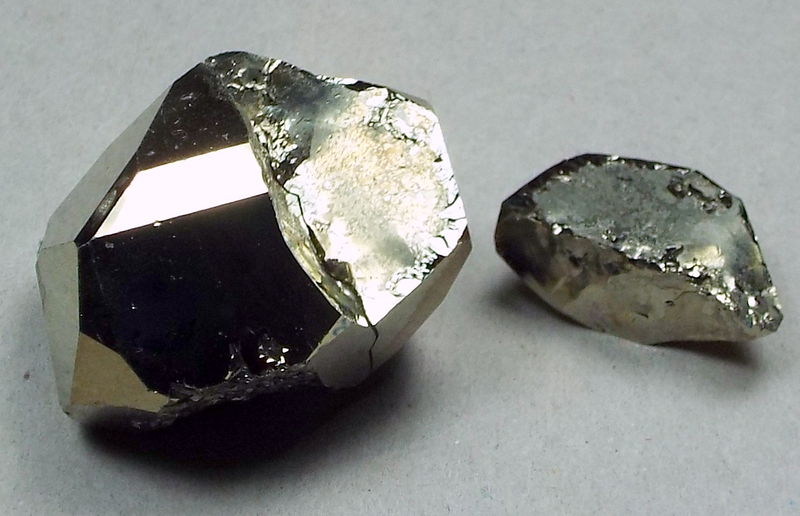
|
_________________
John S. White
aka Rondinaire |
|
| Back to top |
|
 |
Carles Millan
Site Admin
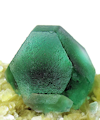
Joined: 05 May 2007
Posts: 1535
Location: Catalonia



|
 Posted: Nov 12, 2019 15:50 Post subject: Re: Unstable pyrite Posted: Nov 12, 2019 15:50 Post subject: Re: Unstable pyrite |
|
|
| John S. White wrote: | | I have a pyrite crystal from the Merelani Hills, Tanzania, that I have had only three years that is falling apart. I also noticed that in a photo of another one on Mindat that there was a crack in the crystal pictured. About ready to fall apart also. What a shame if all of them are subject to this pyrite "disease," See photo attached. Crystal is 3 cm across. |
Hi John
This is a known problem of pyrites. Some people think it is of bacterial origin and recommend the injection of isopropanol into the cracks well before the pieces fall apart. I also own one specimen (not from Tanzania) that suffers the same disease but such a medication failed to stop the illness after several years of a single treatment.
|
|
| Back to top |
|
 |
cascaillou
Joined: 27 Nov 2011
Posts: 262


|
 Posted: Nov 12, 2019 15:51 Post subject: Re: Unstable pyrite Posted: Nov 12, 2019 15:51 Post subject: Re: Unstable pyrite |
|
|
First of all, keep your diseased specimen separate from healthy specimens (especially pyrites/marcasites, but also from sulfides and acid sensitive species in general)
Then, you might want to treat the specimen so to stabilize it (otherwise it will keep rotting)
The idea being to remove all the decomposition products (oxides/hydroxides, and especially free sulfur and sulfates), kill all the bacterias, neutralize the acidity, remove any moisture, and only then apply protective treatment against atmospheric moisture/oxidization. All of this applied to the core of the specimen (i.e. if it's fractured, porous or of radiating structure), not just its surface. And of course, store in a dry place.
Haven't tried it myself, but probably not worth the trouble unless the specimen is a really good one, and provided that the disease isn't too advanced yet.
|
|
| Back to top |
|
 |
Bob Morgan
Joined: 18 Jan 2018
Posts: 251
Location: Savannah, Georgia



|
 Posted: Nov 12, 2019 16:07 Post subject: Re: Unstable pyrite Posted: Nov 12, 2019 16:07 Post subject: Re: Unstable pyrite |
|
|
I've used heat raising the temperature of pyrite in my oven slowly to 300 degrees Fahrenheit and cooking it for a half hour. 'Cant say that it worked very well, since the specimens were fairly well gone.
Van King used to keep some marcasite specimens from Alden, NY, on his toaster oven and they stayed in tact.
I also keep the little bags of moisture absorbing stuff from new shoes etc. in the containers with some of my most prized pyrite.
|
|
| Back to top |
|
 |
lluis
Joined: 17 Nov 2006
Posts: 719


|
 Posted: Nov 12, 2019 16:15 Post subject: Re: Unstable pyrite Posted: Nov 12, 2019 16:15 Post subject: Re: Unstable pyrite |
|
|
HI, all
I am maybe dumb, but in the cracked pyrite from Mr. Sampson-White, I see only a piece fallen from rest. No signs of alteration (maybe just a shock in any time, worsened by changes in temperature...).
To me, maybe wrongly, the solution would be to place/soak/paint the pieces with cracks with Paraloid (an acrylic resin) in acetone (caution: it is extremely flammable and is also toxic; just for what is said should be said....). For one side, it closes specimens to air action (sealed in a non permeable layer), and for other, it glues all parts... So protected and reinforced (and the most important, removable and hard to be seen.... Bad things is that to get the material in small quantities is hard (manufacturer is Rhom&Haas, if I am not wrong... (Paraloid is the brand: should be checked which one is the used by museums....)
With best wishes
Lluís
P.D.: by the way, it worked extremely well in stabilizing a Varangian helmet that was falling apart, experience of an american friend of mine....
|
|
| Back to top |
|
 |
cascaillou
Joined: 27 Nov 2011
Posts: 262


|
 Posted: Nov 12, 2019 16:22 Post subject: Re: Unstable pyrite Posted: Nov 12, 2019 16:22 Post subject: Re: Unstable pyrite |
|
|
I've indeed heard of using Paraloid (and even cellophane) dissolved in acetone, other people reporting good results from a long bath in warm (i.e. heated) WD40.
In any case, this would be the final treatment for protecting the specimen against atmospheric moisture/oxidization.
But in the first place, one should eliminate the causes of the disease (decomposition products, bacterias, acidity and moisture), otherwise the waterproofing treatment would just seal all these nasties inside the specimen, possibly making things even worse.
|
|
| Back to top |
|
 |
Sante Celiberti
Joined: 04 Oct 2019
Posts: 699
Location: Tuscany



|
 Posted: Nov 12, 2019 17:49 Post subject: Re: Unstable pyrite Posted: Nov 12, 2019 17:49 Post subject: Re: Unstable pyrite |
|
|
HI, John.
Living in Gavorrano and having handled thousands of pyrite specimens, I've observed that:
- when the cracks are natural (due to tectonic forces) the pyrite remains stable;
- when the cracks are man-made (stress during the mining) you must expect sooner or later a rot.
I suppose that in case of natural fractures a sort of rehealing protects the fractured surfaces; what doesn't occur in case of "antropogenic" fractures.
You can't blame the quality of Merelani pyrite, which looks very good as you can deduce from the accentuated and lustrous conchoidal fracture of your specimen.
I attach some photos (but I could show dozens) of naturally fractured pyrite from Niccioleta Mine, Grosseto Province, Tuscany, where the phenomenon occurred very often. Consider that they are at list 35 years old and I've done nothing to protect them.
Best regards.
Sante
| Mineral: | Pyrite |
| Locality: | | Niccioleta Mine, Massa Marittima, Grosseto Province, Tuscany, Italy |  |
|
| Dimensions: | 137 x 82 mm |
| Description: |
|
| Viewed: |
25037 Time(s) |
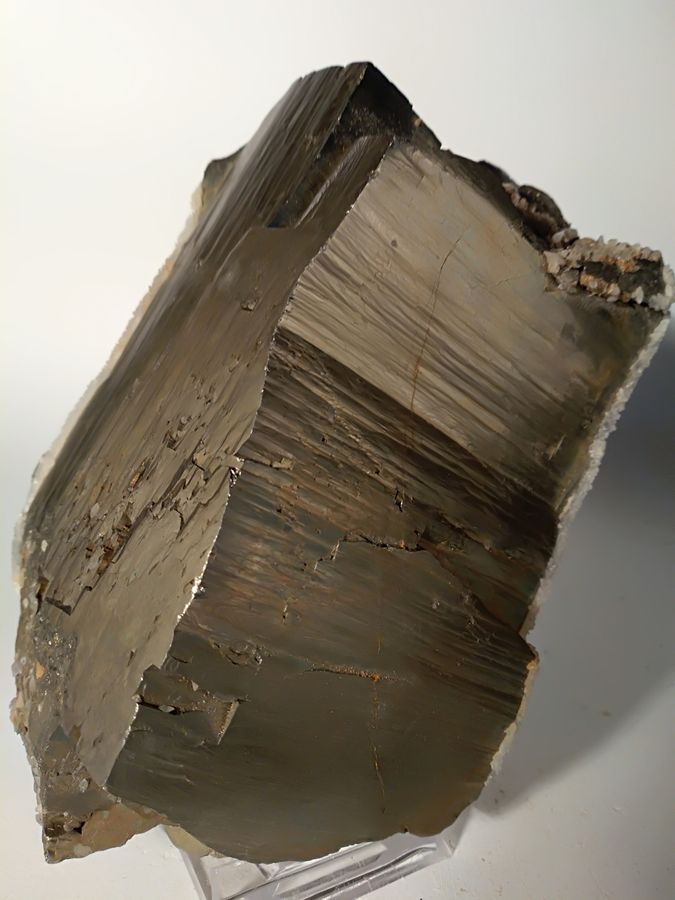
|
| Mineral: | Pyrite |
| Locality: | | Niccioleta Mine, Massa Marittima, Grosseto Province, Tuscany, Italy |  |
|
| Dimensions: | 90 x 110 mm |
| Description: |
| Fractured, displaced and rehealed crystal. |
|
| Viewed: |
25018 Time(s) |
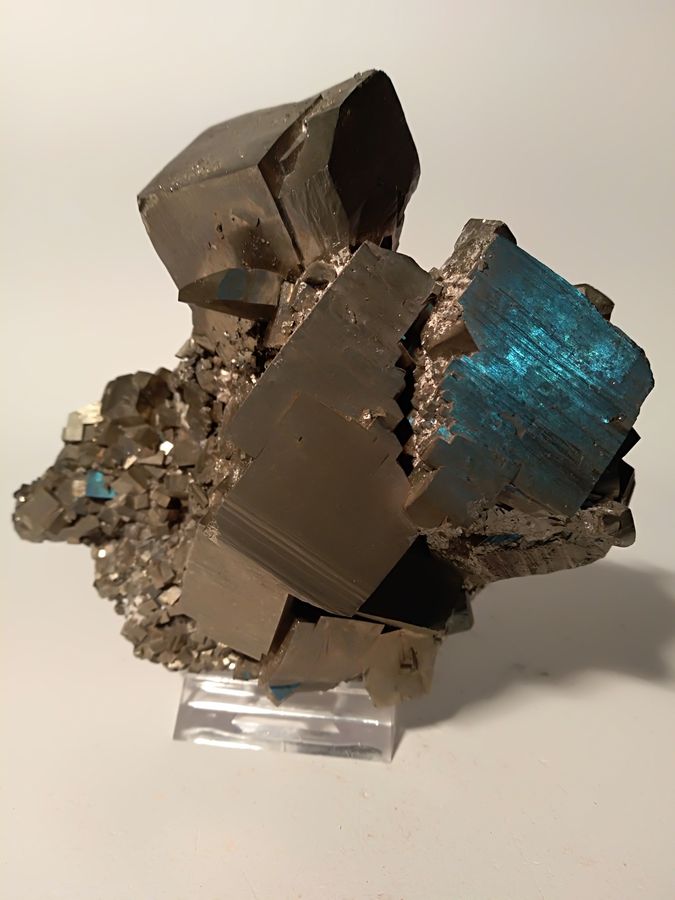
|
| Mineral: | Pyrite |
| Dimensions: | 220 x 140 mm |
| Description: |
|
| Viewed: |
25009 Time(s) |
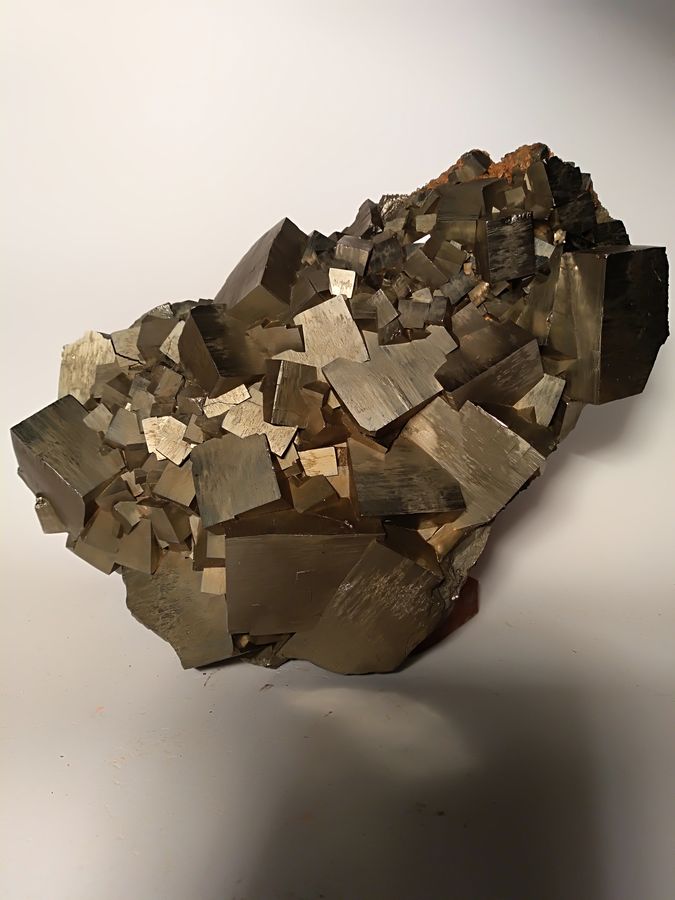
|
| Mineral: | Pyrite, Melnikovite, Quartz |
| Description: |
|
| Viewed: |
25039 Time(s) |
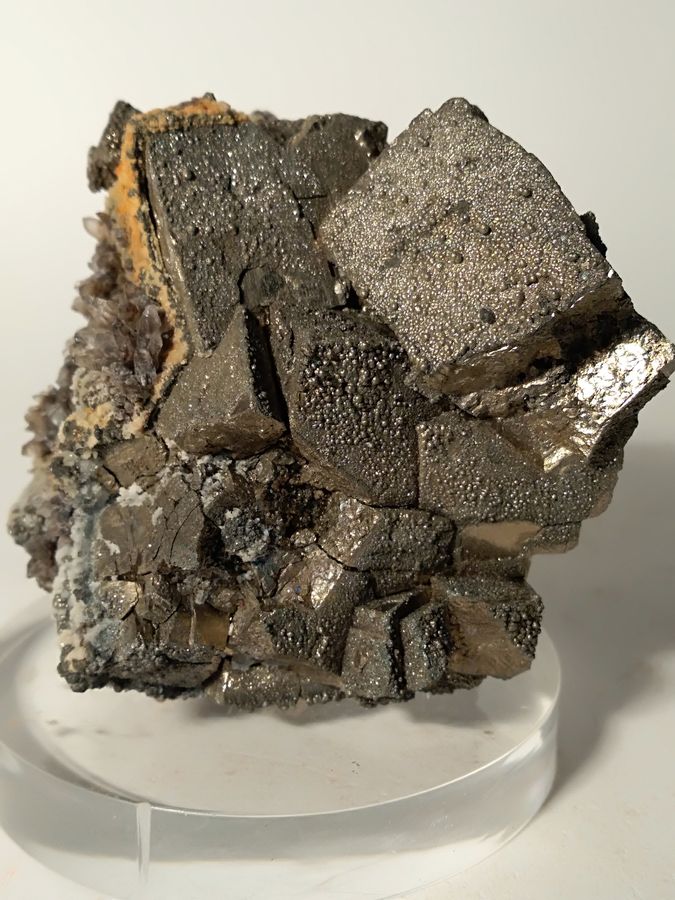
|
| Mineral: | Pyrite, Quartz |
| Dimensions: | 34 x 28 mm |
| Description: |
|
| Viewed: |
25030 Time(s) |
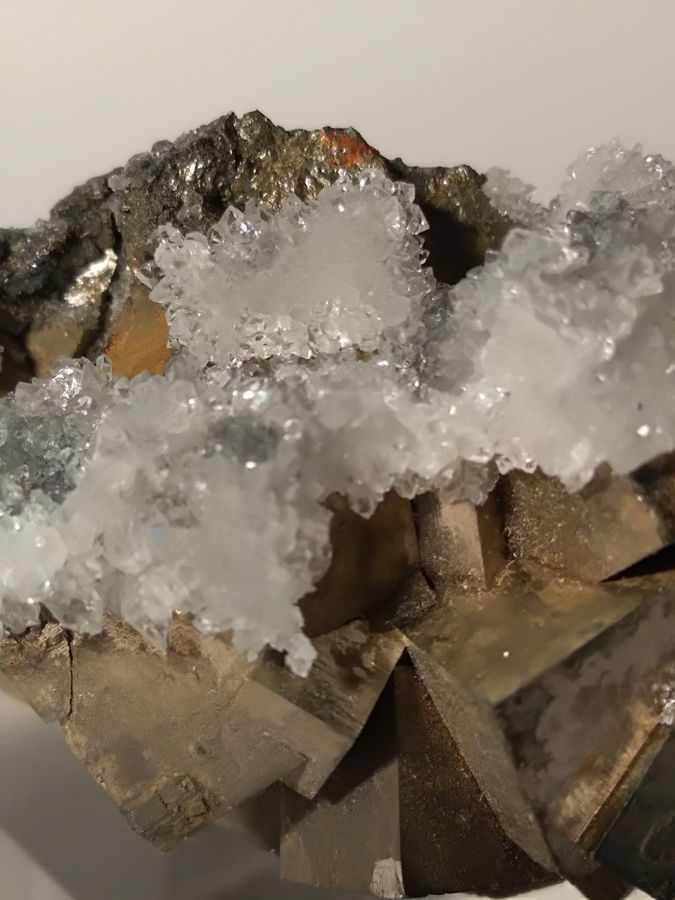
|
| Mineral: | Pyrite, Stibnite |
| Dimensions: | 59 x 31 mm |
| Description: |
|
| Viewed: |
25037 Time(s) |
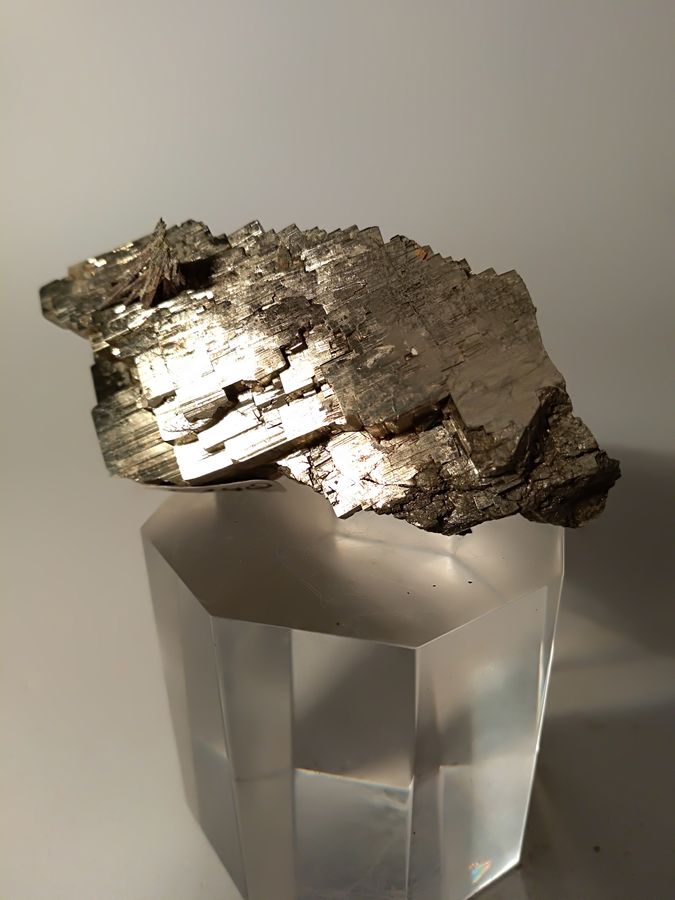
|
| Mineral: | Pyrite, Gypsum |
| Locality: | | Niccioleta Mine, Massa Marittima, Grosseto Province, Tuscany, Italy |  |
|
| Dimensions: | 120 x 93 mm |
| Description: |
|
| Viewed: |
25025 Time(s) |
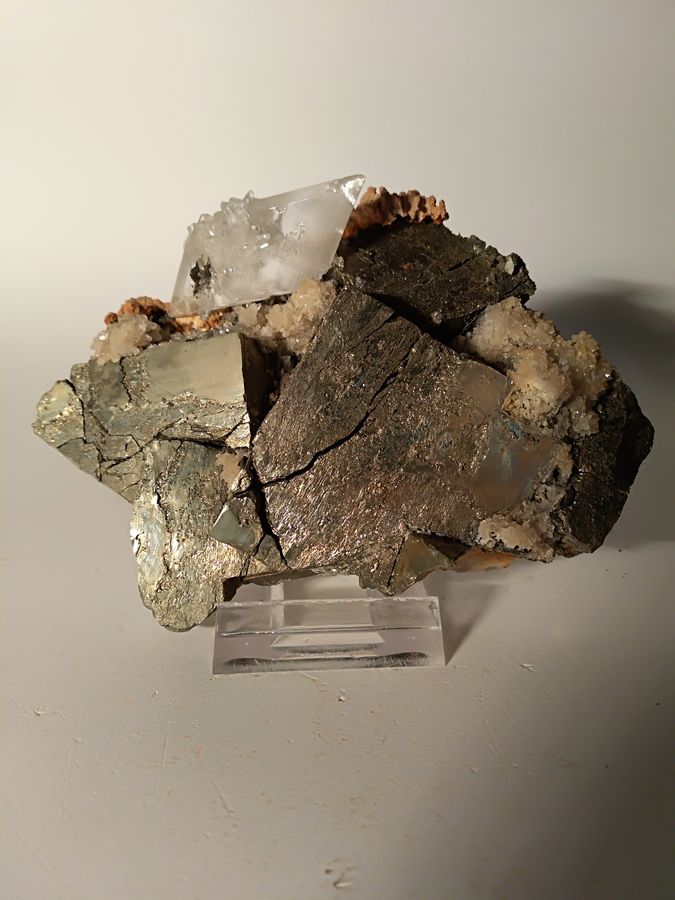
|
| Mineral: | Pyrite, Pyrrhotite |
| Locality: | | Niccioleta Mine, Massa Marittima, Grosseto Province, Tuscany, Italy |  |
|
| Dimensions: | 129 x 76 mm |
| Description: |
|
| Viewed: |
25024 Time(s) |
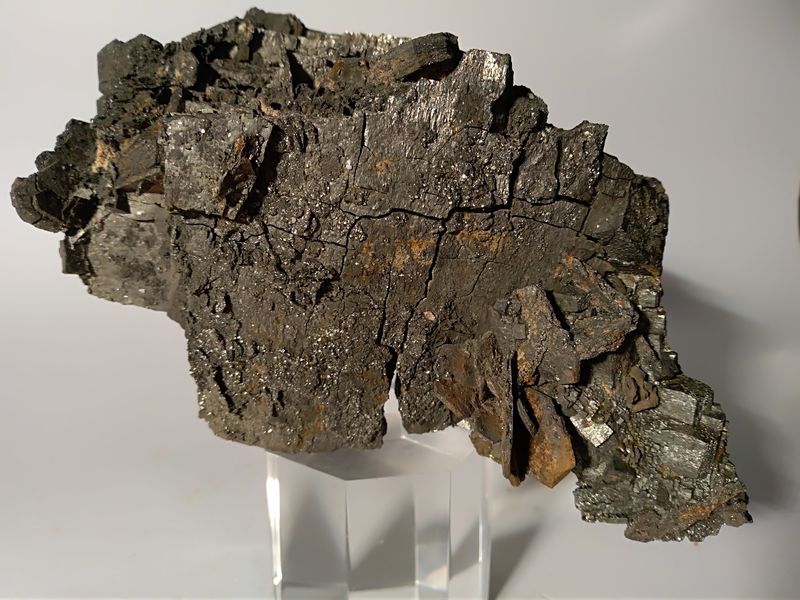
|
| Mineral: | Pyrite, Calcite |
| Locality: | | Niccioleta Mine, Massa Marittima, Grosseto Province, Tuscany, Italy |  |
|
| Dimensions: | 160 x 120 mm |
| Description: |
| A fractured crystal filled with Calcite. |
|
| Viewed: |
25107 Time(s) |
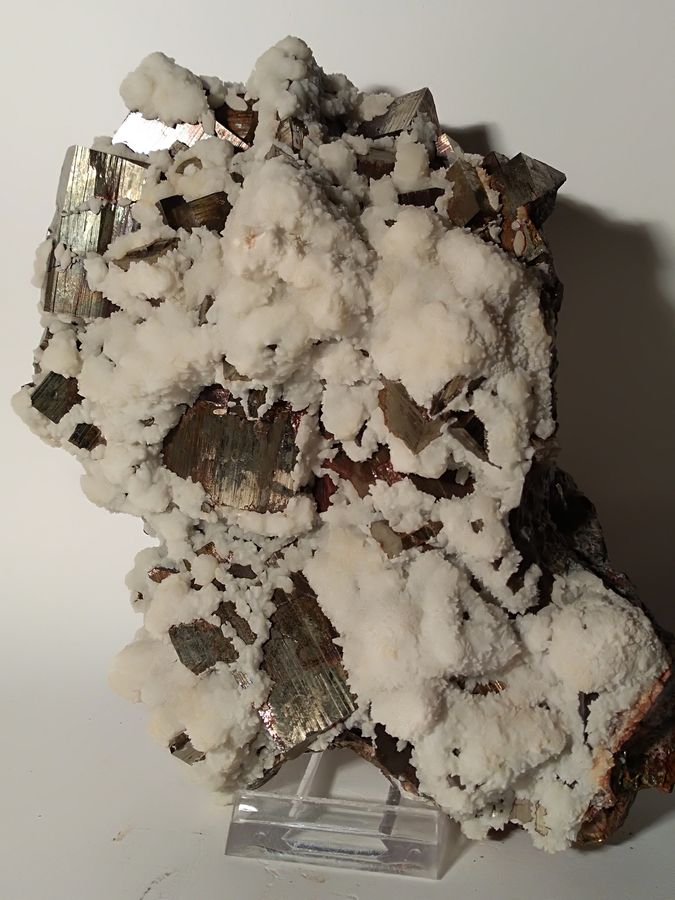
|
| Mineral: | Pyrite, Calcite (ps, after Anhydrite) |
| Locality: | | Niccioleta Mine, Massa Marittima, Grosseto Province, Tuscany, Italy |  |
|
| Dimensions: | 111 x 84 mm |
| Description: |
|
| Viewed: |
25072 Time(s) |
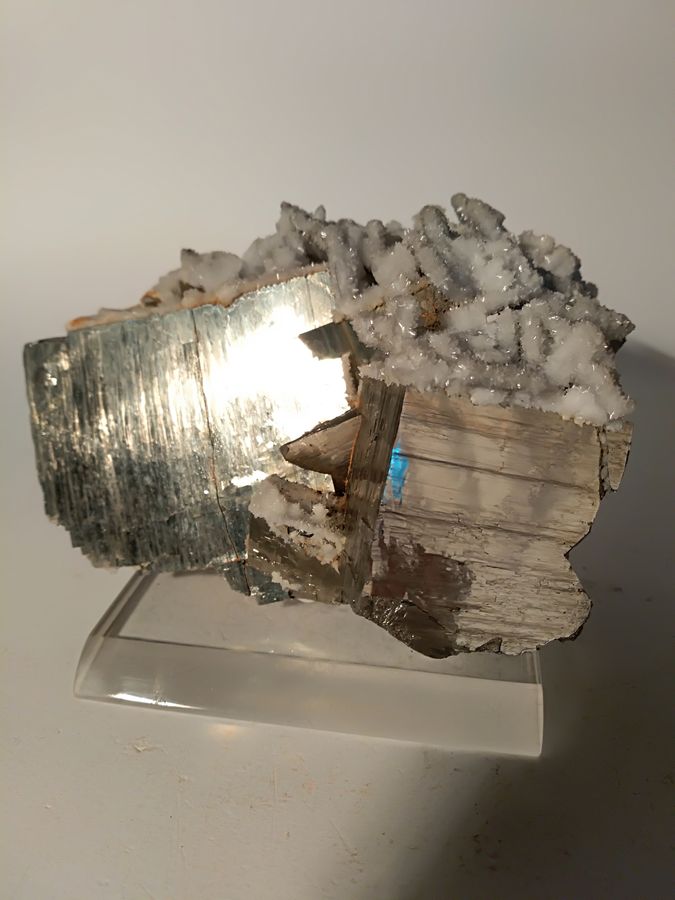
|
| Mineral: | Pyrite, Celestine |
| Locality: | | Niccioleta Mine, Massa Marittima, Grosseto Province, Tuscany, Italy |  |
|
| Dimensions: | 127 x 83 mm |
| Description: |
|
| Viewed: |
25023 Time(s) |
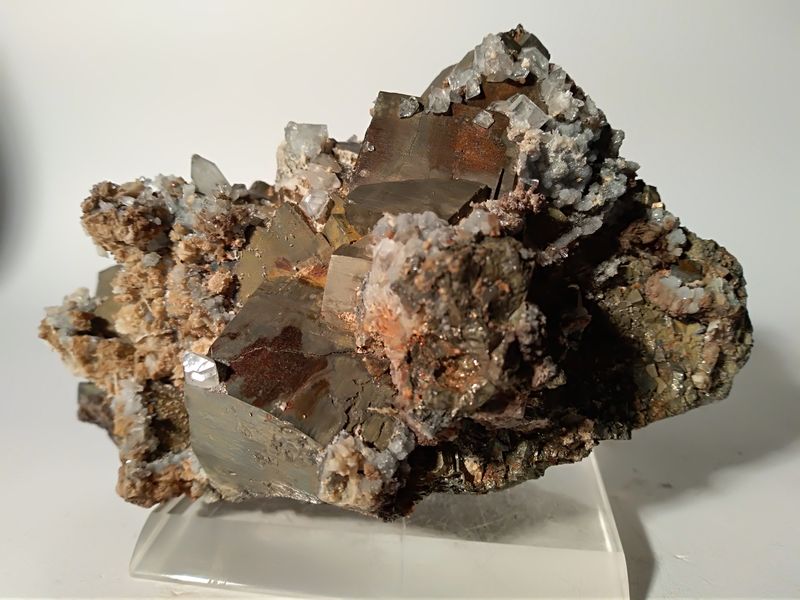
|
|
|
| Back to top |
|
 |
Josele

Joined: 10 Apr 2012
Posts: 410
Location: Tarifa, Spain



|
 Posted: Nov 12, 2019 17:55 Post subject: Re: Unstable pyrite Posted: Nov 12, 2019 17:55 Post subject: Re: Unstable pyrite |
|
|
My experience is that, when kept under the same conditions, pyrite from some localities tends to decompose after a time, while pyrite from other localities stays stable. In my very first rock drawers I have some 50 year old pyrites in perfect condition while others from different origin became dust long ago.
It would be a shame that so shiny and modified Merelani Hills specimens were of the first kind!
|
|
| Back to top |
|
 |
Roger Warin

Joined: 23 Jan 2013
Posts: 1234



|
 Posted: Nov 12, 2019 23:48 Post subject: Re: Unstable pyrite Posted: Nov 12, 2019 23:48 Post subject: Re: Unstable pyrite |
|
|
About disease of pyrite.
I believe that the problem of pyrite is of a chemical nature. Bacteria can accelerate this destructive evolution. They are only biochemical catalysts. Bacteria are not the cause, but they activate the destructive process.
Pyrite with its disulfide anions (covalent bonds) is inherently unstable if there are irregularities in the lattice. So, it appears some chemical anomalies on the atomic scale.
At the level of the unit cell, these imperfections are chemically unbalanced points. There is a local redox potential that must disappear.
This is the principle on which the creation of chemical batteries is based.
In the industrial battery, the reaction is facilitated by cabling to work with this energy and for example to light a lamp. Naturally without this voluntary work, the batteries also degrade, but slowly if there is no short circuit, tending to a point of balance when the battery is exhausted, just as the pyrite does. In chemistry, we speak of oxidation-reduction reactions and redox potentials. These are electrochemical cells as long as the end-of-reaction equilibrium is not reached.
In Nature, in the massifs of sulphurated ores, the whole mass has a reducing character. Of course pyrite is stable there.
The remedy is therefore to place the collected pyrite crystal in a reducing environment or inert one, after extracting by vacuum pump, air, chlorine, water, etc. Pyrite can be placed in a reducing or neutral atmosphere, in dry gases (argon, nitrogen for example).
But then if the pyrite is thus protected, its place is no longer in a showcase.
The disease is even more serious for marcasite (dimorph with pyrite) which often contains microcrystals of pyrite (as in Cape Blanc Nez, France).
Other collectors have encountered this serious problem, they are collectors of meteorites: stony meteorites or metallic ones; they all contain iron, some have little, others are entirely metallic. In space, they are obviously stable because the environment is reducing. Some mineral species are also possible only in space, such as the FeS troilite (extremely rare on earth where we find only pyrrhotite, not very stable) and especially schreibersite (Fe-Ni phosphide).
The decomposition of meteorites is very serious than that of pyrites, because the economic stakes are high (meteorite losses in museums, etc.).
Some meteorite hunters have gained extensive experience in the stabilization of meteorites. The successes are relative but they can be good all the same.
The solution for us might consist in asking these meteorites men to propose solutions.
I am still surprised by the instability of the pyrites of Tanzania, because they are well crystallized. The pyrites of Peru seem to me very stable.
It’s my opinion. Excuse me for the length of my answer and my unbalanced English.
Roger.
PS: to answer Sante Celiberti, a physical crack is not a chemical heterogeneity, invisible to the eye. His opinion is of course correct.
|
|
| Back to top |
|
 |
vicen
Joined: 25 Aug 2011
Posts: 20
Location: Edinburgh


|
|
| Back to top |
|
 |
John S. White
Site Admin

Joined: 04 Sep 2006
Posts: 1298
Location: Stewartstown, Pennsylvania, USA



|
 Posted: Nov 13, 2019 06:15 Post subject: Re: Unstable pyrite Posted: Nov 13, 2019 06:15 Post subject: Re: Unstable pyrite |
|
|
I am well familiar with pyrite decay as I have witnessed it in numerous specimens over the years that I was a curator. Our policy at the museum was to throw the corrupted pyrites away as it was believed, rightly or wrongly, that they could infect other pyrites in close proximity. I am not sure that this is a valid concern as the museum has several drawers of pyrites from Elba, Italy, that it has had for more than half a century many of which have been corrupted while others are as fresh as they were when first collected. In any case I am certain that my pyrite crystal is infected. There are other cracks not shown in the photo and I am quite sure that these are not fractures due to physical abuse. And I am not interested in trying to save the crystal by subjecting it to any of the "remedies" described by other contributors on this Forum, treatments that I am convinced will only prolong the inevitable. My purpose in initiating this topic was really to try to learn if this is a concern for many or most of the pyrites from Merelani Hills, Tanzania.
_________________
John S. White
aka Rondinaire |
|
| Back to top |
|
 |
Bob Harman
Joined: 06 Nov 2015
Posts: 765



|
 Posted: Nov 13, 2019 06:31 Post subject: Re: Unstable pyrite Posted: Nov 13, 2019 06:31 Post subject: Re: Unstable pyrite |
|
|
John, Thanks for clarifying the purpose of this thread. I was unsure where it was suppose to go.
All of us are well aware of the very wide range of pyrite localities with some examples being quite resistant to decay and other examples decaying from pyrite disease rather rapidly. BOB
|
|
| Back to top |
|
 |
Jordi Fabre
Overall coordinator of the Forum

Joined: 07 Aug 2006
Posts: 5057
Location: Barcelona



|
 Posted: Nov 13, 2019 06:38 Post subject: Re: Unstable pyrite Posted: Nov 13, 2019 06:38 Post subject: Re: Unstable pyrite |
|
|
| John S. White wrote: | | ..My purpose in initiating this topic was really to try to learn if this is a concern for many or most of the pyrites from Merelani Hills, Tanzania. |
As far as I know the Pyrites from Merelani can appear inside Calcite veins (see: https://www.researchgate.net/figure/a-b-c-Mineralisation-in-vugs-in-Block-D-mine-in-Merelani-the-dark-colour-of-the_fig1_270447272 )
Maybe the reason of this quick decay could be the fact that the Pyrites maybe were found inside Calcite veins and consequently etched to delete the Calcite?
I'm sending my thought to someone who is extremely familiar with Merelani in order to get his opinion...
|
|
| Back to top |
|
 |
alfredo
Site Admin

Joined: 30 Jan 2008
Posts: 1012



|
 Posted: Nov 13, 2019 21:10 Post subject: Re: Unstable pyrite Posted: Nov 13, 2019 21:10 Post subject: Re: Unstable pyrite |
|
|
When I was living in Bolivia I received a lot of specimens with associated pyrite. Some seemed quite stable, others decomposed quickly. But I noticed that pyrite crystals submerged in the very acid waters of a minewater drainage canal at the famous San José mine stayed counterintuitively bright and shiny and uncorrupted, even after presumably sitting for years in the acid waters of the ditch. So I wondered whether collectors‘ attempts to neutralize acidity were actually enabling decomposition to proceed more rapidly?
So I did an experiment: Sealed pyrite specimens in glass jars filled with water. In one jar I put sodium carbonate into the water to make it alkaline, and in the other jar some dilute hydrochloric acid. After one year, both solutions had a little precipitate in the bottom, indicating that some decomposition had taken place and limonitic sludge was deposited, but it was minimal, and in both jars the pyrites still looked intact and lustrous. I suspect that any oxygen dissolved in the water initially was soon used up and that the solutions then stayed anaerobic for the rest of the year, and that it was the lack of oxygen that saved the pyrites, with the pH not having much effect one way or the other. But I should really repeat this experiment with more rigorous controls.
|
|
| Back to top |
|
 |
John Jaszczak

Joined: 05 Oct 2010
Posts: 300
Location: Hancock, MI



|
 Posted: Nov 13, 2019 23:53 Post subject: Re: Unstable pyrite Posted: Nov 13, 2019 23:53 Post subject: Re: Unstable pyrite |
|
|
I have several miniature and smaller Merelani pyrites in my collection, and have also photographed some loose larger and very lustrous crystals. Several of the miniature and smaller samples I have are on some matrix so are quite interesting. Most of them show what I would call natural fractures- natural because the matrix holds the broken pieces together with matrix in between. Some also show partially broken crystals with matrix right on the fracture surface. I should try to photograph some.
Some of the matrix pieces are on damaged drusy graphite, and others are on drusy calcite. Clearly the calcite crystal associated pieces are not acid treated, and I don't think the graphite matrix samples are acid treated to dissolve the calcite, though I have seen other specimens that came fairly directly from the mines that were clearly acid treated to dissolve calcite (and on one piece, ruin a blue apatite crystal). For the loose crystals I don't know if they might have been broken out of, or dissolved out of calcite.
I have been wondering about the stability of Merelani pyrite and so was interested (and sorry) to see John's broken piece. So far after 4 or 5 years, my crystals don't seem to show any pyrite disease.
_________________
Adjunct Curator, A. E. Seaman Mineral Museum
Professor of Physics
Michigan Technological University |
|
| Back to top |
|
 |
|





